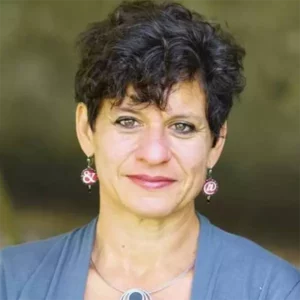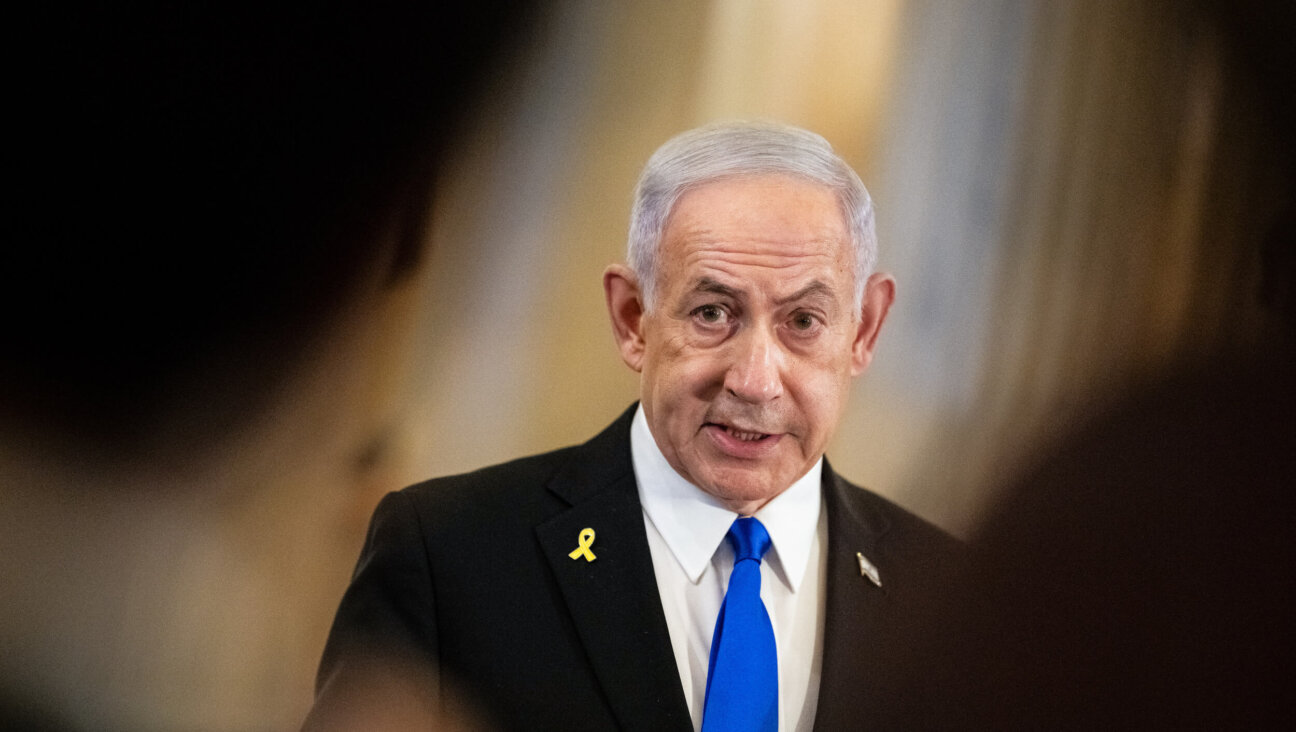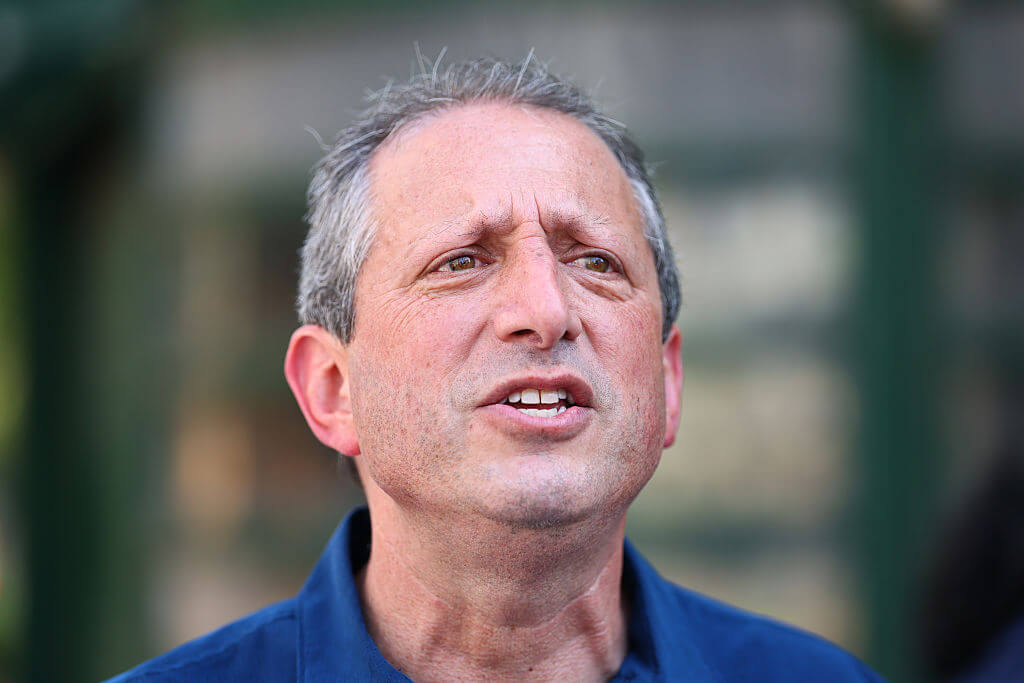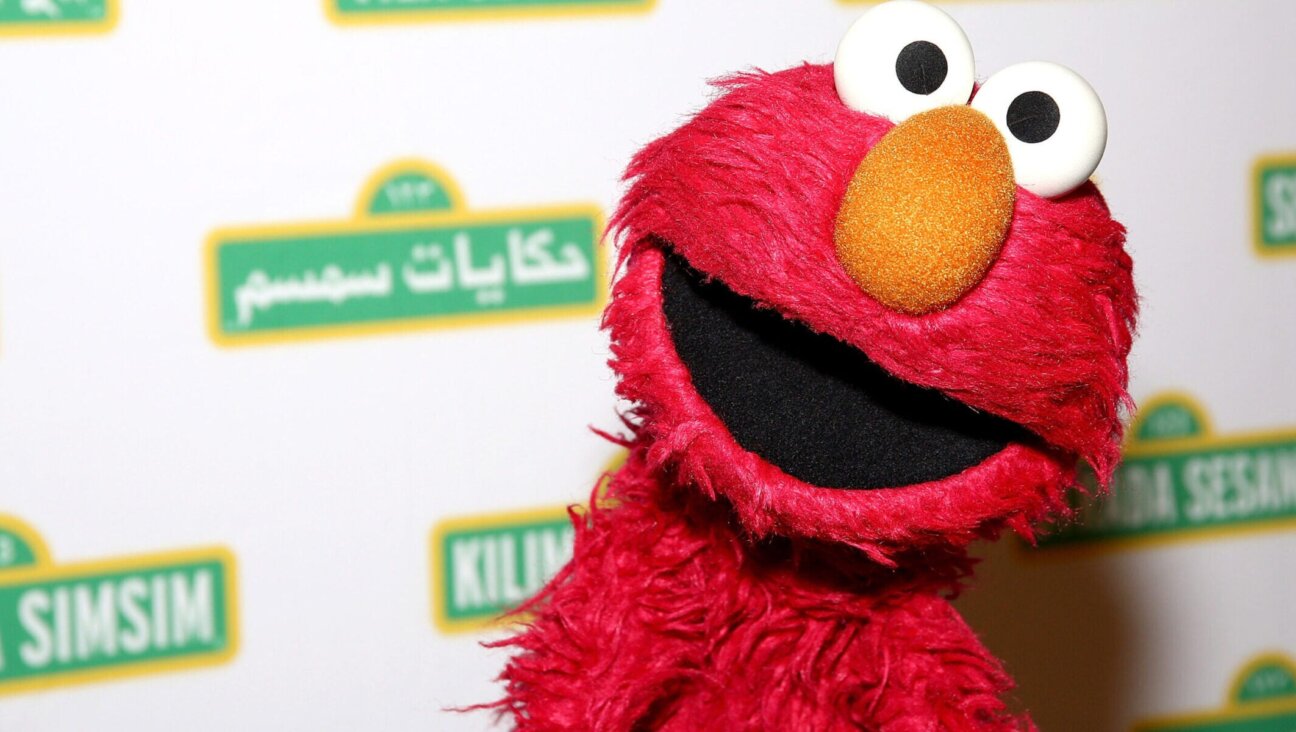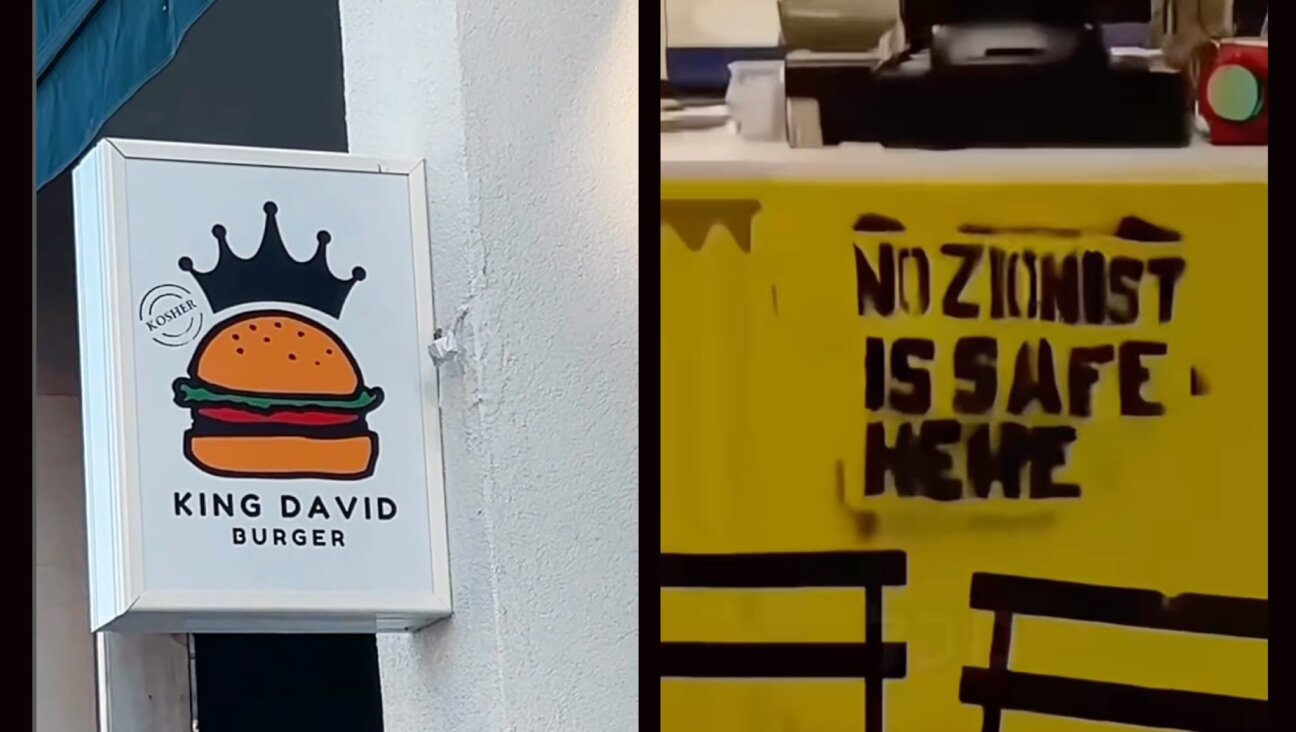Siding with humanity means watching the horrific videos from Oct. 7 — and from the bombings in Gaza
‘The way to grasp the severity and the scale is to watch this, to be witness to this,’ an IDF spokesperson said

Photos of hostages displayed at Israel’s consulate in New York. Photo by Jodi Rudoren
The faces of most of the dead are blurred out in the video, so you focus on the clothes. A girl of perhaps 4 in a white dress with blue butterflies. One a bit older in a T-shirt with little Mickey Mouses all over.
A young woman wearing a black bustier covered in colorful rhinestones, another with a green halter top, a third whose Doc Marten combat boot is twisted at an impossible angle. Was it snapped before or after she was murdered at the Nova Music Festival? Which is worse?
The faces of the Hamas terrorists are not blurred out in the 43-minute montage the Israel Defense Forces made to document the absolute depravity of the Oct. 7 attack. There are scenes of them resting on a park bench and celebrating for the cell-phone cameras, clean-cut young men with trim beards, grinning at their good fortune to have made it into Israel on this sunny Saturday morning and slaughtered so many Jews.
There is an audio clip of one calling home to his parents in Gaza on a cell phone snatched from a woman he murdered in Kibbutz Mefalsim. “Look at my WhatsApp to see how many I killed!” he exults in Arabic, according to the English subtitles on the screen. “I killed her and her husband! I killed 10 with my bare hands!”
As he brags, you hear the young man’s father saying “Allahu Akbar” over and over, and you hear his mother crying. “May God bring you back in peace,” she prays.
“Mom, your son is a hero!” the terrorist shouts. “Kill! Kill! Kill!”
I watched the video Friday morning at Israel’s consulate in Manhattan with about two dozen United Nations ambassadors and consulates general from countries friendly with Israel, plus a handful of journalists for Jewish publications. The group stared at the screen, silent and stoic, through the series of nightmarish clips from Hamas body cams and dashboard cams, Israeli security cameras and traffic cameras, social-media posts from both the terrorists and some of their victims, and cell-phone videos shot by Israeli first responders.
The horrific footage was first shown to international reporters near Tel Aviv on Oct. 23 — you’ve probably read accounts of it in The New York Times or The Atlantic. Israeli officials screened it for the first time in the U.S. a week ago, for a group that included the presidents of Fox News, NBC and the Associated Press. On Wednesday, 50 members of Knesset watched it in Jerusalem, some breaking down in tears after.
Now, with calls for a cease-fire ballooning around the world and the Hamas-run healthy ministry in Gaza reporting a death toll from Israel’s retaliatory strikes in Gaza over 9,000, the Israelis have decided to share it more widely — in New York and London and other places, targeting what they called “decision-makers” in hopes of building support for their ongoing assault on Gaza. The IDF confiscates viewers’ cell phones, under an agreement with the victims’ families not to allow the gruesome footage to be published on the internet.
“The way to grasp the severity and the scale is to watch this, to be witness to this,” Lt. Col. Amnon Shefler, an IDF spokesman who arrived in New York from Israel only two hours before the screening, told our group. “Sadly, we have seen in our history what happened when we don’t bear witness.”
Gilad Erdan, Israel’s ambassador to the United Nations — who sparked controversy this week by donning a yellow star like the one the Nazis made Jews wear — was more blunt about the propaganda war Israel is fighting alongside the ground and air war.
“We all know about Holocaust denial,” he said. “We are starting to see a phenomenon of massacre denial.”
I did not need to see the beheaded body or the skull that was clearly crushed by a boot or the charred remains or the blood-drenched floors or the shot-out cars or the impossibly bent legs to know how awful the Oct. 7 attack was. And: It does not make me feel any better about the death and destruction being wrought on the Gaza Strip.
Let me be clear: The Hamas attack was barbaric, inhumane, a clear crime against humanity, an illustration of pure evil beyond what I had ever imagined possible.
And: I believe Israel’s stated goal of rooting out Hamas from Gaza and destroying its 300-mile network of terror tunnels is reasonable if not realistic. I understand that the attack shook the country to its core and that Israel cannot survive with the possibility of another Oct. 7 — with, as one of the Israeli officials at the screening put it, terrorists the equivalent of “five blocks” away.
But I don’t want to feel better about the death of thousands of Palestinian civilians and the destruction of their homes, about whole extended families being felled by F-16s — and you shouldn’t either. We should feel terrible about all of it. It’s devastating. War is hell.
I was at a dinner of Jewish philanthropists the other night. It was a few hours after news of the flattening of Gaza’s Jabaliya refugee camp filtered across our phones. Someone posited that the buildings in Gaza are more vulnerable because of the tunnels underneath. Or maybe the construction is flimsy. Maybe both.
I could see he was trying to make himself feel better about it all. So, too, when Israel’s supporters point out that Hamas commits the war crime of using human shields by operating in or near schools and hospitals, making it impossible to destroy the terrorist infrastructure without mass civilian casualties. This is true — but also should not make us feel any less terrible about the lives that are lost.
Rabbi Jill Jacobs, head of the human rights group T’ruah, put out a statement this week that included the line, “We choose the side of humanity.” I asked her if I could get a bumper sticker with that on it. She told me I was not the only one.
Choosing the side of humanity does not mean demanding a cease-fire, not while Hamas is still firing rockets, not while Israel is still burying some of the 1,400 souls slaughtered on Oct. 7, certainly not while more than 200 babies and teenagers and mothers and brothers and grandparents from so many countries are still hostages in Gaza.
It does mean heeding President Joe Biden’s call for humanitarian pauses to enable civilians to leave Gaza and food and medicine to be trucked inside.

And choosing the side of humanity means watching the gory footage of Oct. 7 if you are invited to, bearing witness to the inhumanity. Seeing a Hamas man try to chop off the head of a dead Thai worker with a garden hoe, swinging it while screaming “Allahu Akbar.” What kind of God?
As other journalists have written, the most harrowing parts of the video are not the images of the brutally murdered and in some cases mutilated bodies. It is the scenes of the living, of the humanity, that will haunt me.
Early on in the video, the terrorists have made it to Kibbutz Be’eri but apparently cannot get through the big yellow electronic gate. A car approaches, and the driver looks toward the guard booth, expecting a familiar face from the kibbutz. Instead, it is a terrorist. He and another who was hiding in the bushes shoot into the car from both sides. The driver collapses, but the car rolls forward into the gate, which cracks open.
The kibbutz is quiet as the terrorists enter, the residents sheltering in their safe rooms. A black dog saunters down a stone path. A gunman blasts three bullets into the dog, which bounces in the air with each shot.
There is footage from a security camera at a kibbutz kindergarten that shows a woman trying to hide behind a stack of pillows. There is a clip of perhaps 20 female soldiers crowded into a shelter, each holding her cell phone, shaking and saying “Wow, wow” after each of a series of loud booms.
There is a shot from far away of hundreds of young people from the music festival running across the desert. It evokes, for a minute, our exodus from Egypt. Except for the relentless soundtrack of automatic weapons.
So many bullets. So much shattered glass. So very, very much blood.
And there is the terrible, awful, horrific and unforgettable scene of a father and two of his sons, all in their underwear, running through their home and across their patio into a shelter. The father carries the younger boy in his arms
The terrorists wait until all three are in the shelter and then toss a grenade inside. The father’s body falls out. The gunmen push the boys, who are maybe 6 and 10 years old, back into their kitchen, where one of the men drinks from a bottle in the fridge.
“Abba, abba!” one of the boys screams. Hebrew for “Daddy, daddy!”
“Daddy’s dead, Shay,” says the other. “It’s not a prank.”
“I know,” says Shay. “I saw.”
One of the boys has been shot in the eye and cannot see. The terrorist is drinking juice, and then water. “Why am I alive? Why am I alive?” screams the boy.
It’s worse than any horror film to watch this video, especially at the end, when there is a slide that says its shows 138 people who were either murdered or taken captive — less than 10% of the total.
It’s awful, too, to see the footage from Gaza — the bodies being pulled from the rubble, the refugees running for safety, the children looking up at the sky waiting for the next bomb to fall.
We should feel terrible about all of it. That’s what it means to choose the side of humanity.
___



